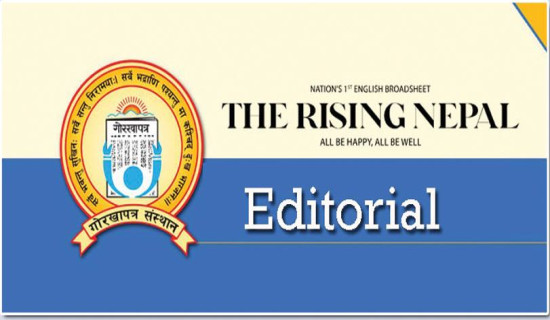- Sunday, 2 November 2025
Ghantu dance in full swing performance across Gurung villages
By Nabin Raj Kuikel,Lamjung, May 16: On the occasion of Baisakh Purnima (Full Moon of the Nepali month Baisakh), the traditional Ghantu dance is being performed vibrantly in the Gurung settlements of Lamjung. Rooted in the ancient cultural practices of the Gurung community, the Ghantu dance not only serves to preserve their heritage but has also attracted a growing number of domestic tourists.
The Ghantu festivities commence on Baisakh Purnima and culminate on Panchami, the fifth day thereafter. According to Purna Gurung of Dhange, Marsyangdi-3, the dance has brought vibrancy and joy to the village. Visitors have been arriving in significant numbers to witness the Ghantu performances in villages like Sanjapu, Mipra, Ghanpokhara, and Sildhunga.
Kamsarki Gurung, chairperson of the Rock Garden Khanigaun Tourism Committee, confirmed that Ghantu festivities are ongoing across numerous Gurung settlements. “Every village is alive with the rhythms of Ghantu. The gathering of guests has brought cheer and festivity,” said Gurung, adding, “The movement of visitors coming and going continues steadily.”
The Ghantu dance has been performed in Gurung villages such as Dhange, Ghanpokhara, Siurung, Chhapa, Mipra, Pasgaun, Sydney, Gilung, Hiletaksar, Taghring, Shrimanjyang, Ghalegaun, Karapu, Bhujung, Ghilung, Taghid, Ghhermu, Hiletaksar, Phaleni, Dhodeni, Pachok, Pyarjung Goda, Ilampokhari, and Dudhpokhari. Local mothers’ groups and youth clubs in each village are responsible for organising and managing the festivities.
According to Indra Bahadur Gurung, a scholar of Gurung language and culture, the origin of Ghantu dates back to around the fifteenth century. The performance traditionally involves two premenstrual girls, who symbolise the medieval King Parshuram and Queen Yamphawati. Once initiated, these girls may continue to perform regardless of their age or stage of life.
“Ghantu songs depict every facet of human life—from birth, livelihood, romance, marriage, hunting, fishing, farming, to warfare,” stated Gurung. “There are two primary forms of Ghantu—Sati and Bahramaase. The dance also includes the distinctive performance of the Kusunda dance.”
Buddhiraj Gurung, a master of Ghantu from Bhujung, explained that the lyrical story begins with love and ends in separation and death. “After the king is killed in battle, the queen prepares to commit Sati, entrusting household affairs to her mother-in-law, wealth to her father-in-law, and placing her infant son, Balkrishna, upon the throne,” he narrated. “Upon learning of the king’s death and the queen’s decision to become Sati, the household animals—dogs, cats, elephants, pigeons – all begin to cry.” The moment Yamphawati, or the Ghantusari, weeps during the Sati ritual is said to move every witness deeply.
The Ghantu dance is performed over a span of three to five days. As per priest Indra Bahadur Gurung, the songs sung during this time cover twelve symbolic ‘dandas’ or chapters, including inviting the deities, romantic longings, farming activities, categorising flowers, games like jaal and dhadiya, bathing rituals, hunting, marriage, battle, and ultimately, the act of Sati. The deities of natural peaks—Hinchuli, Barchuli, Deuchuli, and Gangachuli—spanning east-west and north-south directions, are also invoked. “In the Kusunda dance, these very deities are believed to possess the Ghantusari, often causing her to faint,” said Indra Bahadur. “If the song and rhythm falter, the Ghantusari cannot be revived.” He also recounted an ancient legend in which a Ghantu performer, who fainted mid-performance, could only be revived by bringing in a Ghantu master to sing near her grave—eventually awakening her from death itself.
Traditionally, the Ghantu performance concludes with a symbolic selai ritual, in which the performers are led to a sacred hill or purified place near the settlement, marking the ceremonial closure of the festival.



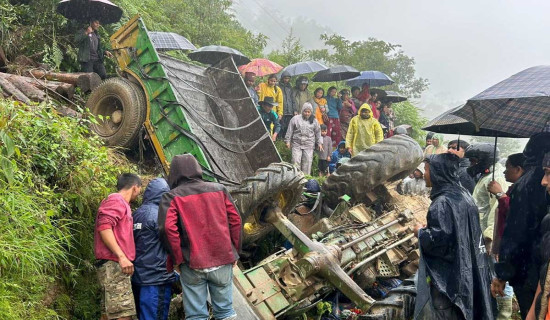
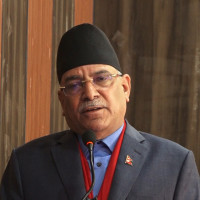
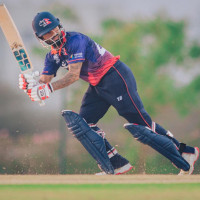
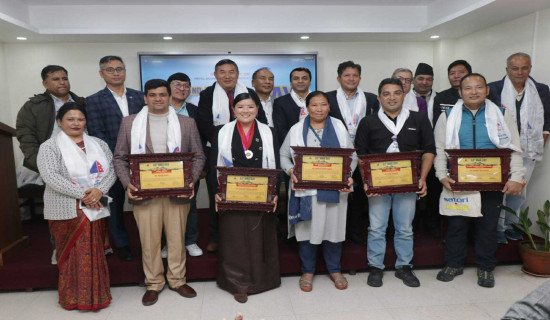
-square-thumb.jpg)
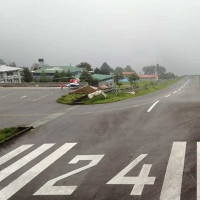
-original-thumb.jpg)



